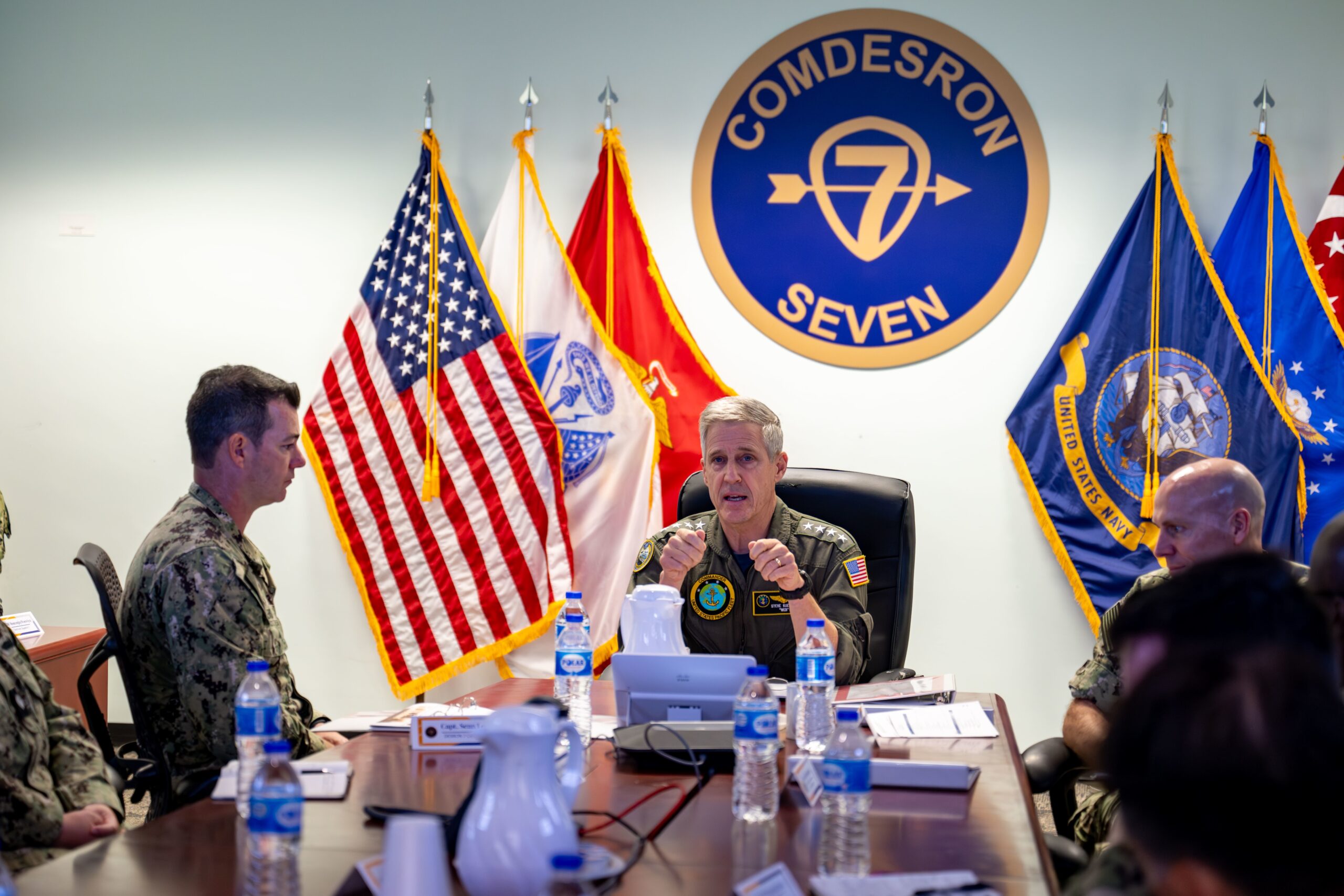In the not-so-distant future, a U.S. military commander in the Indo-Pacific could be forced to fight two major wars at once—one against a Chinese assault on Taiwan, the other against a North Korean attack on the Korean Peninsula. This dual-front crisis scenario, long considered unlikely, is now routinely modeled in wargames and quietly debated in high-level policy circles. Yet the United States and its East Asian allies remain unprepared—not in terms of firepower, but in coordination, planning, and execution.
Today’s alliance architecture is not designed to handle a simultaneous conflict in Taiwan and Korea. The existing command structures are fragmented, force designs are nationally siloed, and procurement choices are often politically misaligned. In short, there is no unified playbook for fighting two wars in East Asia—let alone winning them.
But the United States has faced a similar problem before. From NATO’s founding in 1949 through West Germany’s integration in 1955, Washington confronted a world where it had to deter simultaneous threats in Europe and Asia. It responded by building institutions—not just capabilities. The first phase of NATO’s evolution offers enduring lessons in how to organize allies, align procurement, and prepare for multi-theater war. Today, the U.S.–Japan–South Korea triangle urgently needs to draw from that experience before the next crisis begins.
Learning from NATO’s Blueprint
At the 1952 Lisbon Conference, NATO members committed to fielding 50 divisions—an ambitious goal that drove significant increases in defense spending across Europe. Washington played a central role in catalyzing this shift through economic leverage, strategic vision, and the shared threat of Soviet aggression. But what mattered more than raw spending was the coordinated structure that emerged: NATO didn’t just build forces; it built a cohesive force.
A parallel dynamic is unfolding in East Asia. Japan has pledged to double its defense budget by 2027, investing heavily in standoff missiles, ISR, and munition stockpiles. South Korea already spends over 2.7% of GDP on defense and is expanding long-range strike capabilities, naval power, and missile defenses. But unlike the early NATO experience, these efforts remain nationally fragmented. Without integration, the investments of today may become the inefficiencies of tomorrow.

NATO’s lesson is clear: deterrence is not created by defense spending alone. It depends on force structure coherence, shared priorities, and a division of labor among allies. If Japan fields Tomahawk cruise missiles and South Korea invests in submarine-launched cruise missiles and explores the development of a light aircraft carrier, who integrates and sustains these systems when crises erupt? Which ally reinforces which theater, and how quickly? Without institutional answers to these questions, military planning becomes guesswork.
The lack of a trilateral command mechanism is one of the most pressing gaps. In 1951, NATO established SHAPE—the Supreme Headquarters Allied Powers Europe—as a centralized node for operational planning, logistics, and interoperability. Nothing like SHAPE exists in the Indo-Pacific today. The U.S.–ROK Combined Forces Command and U.S.–Japan coordination under USFJ and INDOPACOM remain bilateral and compartmentalized.
The result is a strategic blind spot. In a Taiwan conflict, U.S. naval assets might be redeployed from Korean waters. Simultaneously, while Japan’s 2015 security legislation enables expanded support for U.S. operations, political and legal constraints could still delay or limit Japan’s full-spectrum support in a Korean contingency—particularly absent a trilateral planning framework.
Rather than creating an “Asian NATO,” the immediate solution could be the establishment of a trilateral planning cell within INDOPACOM—drawing staff from South Korea’s Joint Chiefs of Staff and Japan’s Self-Defense Forces. With access to real-time intelligence and shared scenario libraries, this cell could coordinate key wartime decisions: who reinforces whom first, where ISR and munitions are prepositioned, and how shared air and missile defenses are prioritized.
The Missing Links in Today’s Triangle
In Cold War Europe, deterrence wasn’t just built on troop presence—it was engineered through weapons transfers, co-development, and standardized systems. From NATO-standard artillery to the F-104 Starfighter program, the U.S. actively enabled its allies to fight as a unified force. That same philosophy is needed now.
Despite growing defense budgets and bilateral cooperation, Japan and South Korea still procure weapons systems on separate tracks. This is no longer sustainable. Both nations are investing in long-range fires, loitering munitions, maritime ISR, and AI-enabled systems—but without common platforms or interface standards, these capabilities will not be additive. They’ll be isolated.
Consider the challenges of integrating South Korea’s Hyunmoo missiles, Japan’s emerging standoff platforms, and U.S. Precision Strike Missiles across the region. Without interoperable command-and-control architecture and sensor-to-shooter integration, joint operations will be hindered at best, and mutually incompatible at worst.

(Wikicommons)
This is not just a military challenge—it’s an industrial one. U.S. defense firms should lead co-development and licensing efforts for key enabling technologies, including semiconductors, propulsion, and secure comms. Trilateral interoperability should be baked into early-stage procurement—not patched on afterward. Cross-servicing agreements, software integration frameworks, and joint sustainment pipelines are essential for crisis response.
Another critical gap is mobility. During the Cold War, U.S. forces in West Germany functioned not as war-winning units, but as tripwires to guarantee American involvement. In East Asia, the 28,500 troops in South Korea still serve this tripwire function, while the 54,000 U.S. personnel in Japan provide a more flexible regional base for power projection. But in a dual contingency scenario, static presence alone is no longer sufficient—what’s needed is rapid cross-theater movement of air, naval, and logistical forces across an integrated architecture.
Force concepts like the U.S. Marine Corps’ Expeditionary Advanced Base Operations (EABO), Japan’s Southwest Islands Defense, and South Korea’s Kill Chain and KAMD programs are individually impressive. But they are not harmonized. Without joint operational concepts for ISR sharing, distributed fires, and base defense, the alliance triangle will struggle to respond as a unit.
Most critically, strategic prioritization must be pre-negotiated—not improvised in crisis. Eisenhower’s “New Look” strategy recognized that not every theater could be treated equally. Today, Japan, Korea, and the U.S. all implicitly assume that their theater will be the center of gravity in a future crisis. This is dangerous.
In a Taiwan-first scenario, Korea may need to hold with available forces while Japan supports U.S. operations. In a Korea-first crisis, Japan must enable logistics and maritime operations even while deterring Chinese opportunism. These trade-offs require strategic maturity—not nationalism.
The window for building real institutional integration is closing. The U.S.–Japan–South Korea triangle holds enormous potential, but summits and photo ops are not enough. It’s time to move toward planning cells, shared procurement pathways, interoperable command networks, and industrial resilience.
The next conflict may not wait for allies to align their playbooks. The choice is clear: plan now—or scramble later.


